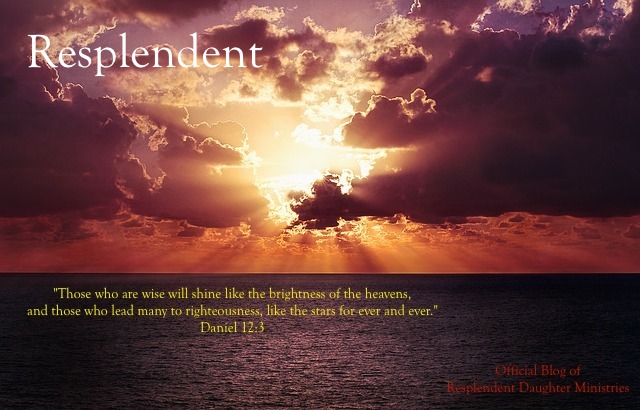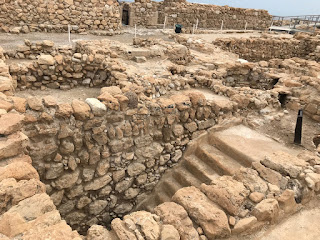In her absence we set out this morning for the Dead Sea area. On the way, we made a stop in Bethany.
Bethany is part of Area B of the West Bank, which means it is under Palestinian control. Bethany, also called Azariya, is not very far at all from Jerusalem. However, getting there is another matter. It is about a 30-minute cab ride from Jerusalem. Bethany is very similar in appearance to Bethlehem, because of the culture, the Muslim ambience, styles, traditions, the economic level, etc. One of the fascinating things about the various communities and towns of Israel, from a sociological standpoint, is the effect the religious beliefs and political leanings of the people on how they live their lives. There are highly visible differences from community to community.
In Bethany, we went to the site believed to be where Mary, Martha and Lazarus lived and very close by, where Lazarus was buried. The site is right in the middle of the bustling town. There is a Greek Orthodox church standing on the property, as well as a Muslim mosque. The story of Lazarus and indeed the site is viewed sacred by both Muslims and Christians. The small church we viewed was built in 1967. Previously, there were other churches standing on the property, with the first being established in the 3rd century A.D. Because of earthquakes and other events, those structures were ruined. Similarly, the mosque right at the tomb is the second one, since the 1300s. This is the thing about all these "holy sites" over here: SO much time has passed that it is very difficult to prove that the thing you are actually seeing is the very one you read about in the Bible. I'd say that, in most cases, it isn't. For example, we saw the Jordan River yesterday. Did we see the exact place Jesus was baptized? No. Has the river changed somewhat in the past 2000 years? Yes. I mean, you just have to appreciate these historical sites for what they are and not get tangled up in complete authenticity. We saw a tomb today. Was it very much like the tomb Lazarus was buried in? Yes. Was it the very one he was buried in? I don't know. It's possible it was. It's possible it wasn't. If it wasn't, then very likely the tomb of Lazarus was a very similar one nearby. You see what I mean?
Leaving Bethany, we again resumed our trek southward toward the Dead Sea. Our next stop, though, was the Qumran National Park, where the Dead Sea scrolls were discovered. Archeologists have uncovered a great deal about the monastic order of Jewish men who lived in this desert at the edge of the Dead Sea. The group's community was situated up on a bluff, with the towering cliffs and caves above them. Below them was the Dead Sea. We learned how devout these men were and how diligently they studied and copied the scriptures. Also, we were able to walk around and view several components of their community - - the eating hall, several ritual bath facilities, the accountant's office where over 300 pieces of silver were unearthed, the kitchen, the animal pen areas, and so forth. We saw the first cave where scrolls were discovered in clay jars, quite accidentally by a Bedouin shepherd, 1900 years after the Essenes hid them. These men were obviously great engineers and quite intelligent. The community was destroyed around the time the Romans destroyed Jerusalem in 70 A.D. In fact, the soldiers took it over as their garrison for a period of time. When the Six-Day War ended in 1967, the area was once again reclaimed by the Israelis; and, the park you can visit today was developed.
From there, we went a short distance to the Kalia beach complex on the Dead Sea. Being here in January, we are in "the off-season". There were not many bathers in the waters, although there were a few. A dozen, maybe. My traveling companion today, Christopher, eagerly prepared to float in the waters. I know I should have had more enthusiasm for it, but it was cold today, y'all! I contented myself with sitting on the beach for a few minutes while Chris floated effortlessly in the extremely buoyant waters. The shore of the Dead Sea is black mud, for which the area is famous. The cosmetics industry in this area is big commerce. Dead Sea bath salts, black mud masks and cosmetics of all kinds flourish as the rich minerals of the area are combined with argan oil and other beautifying ingredients. I saw a salesperson apply the black mud to a woman's face and then use a tissue wrapped over a magnet to clean it off. Water would not wash it off. The magnet drew the minerals to it, through the tissue. I was pretty amazed at that, actually!
The Dead Sea is shrinking. I mentioned to you that, years ago, the water came several miles farther inland, all the way up to the cliffs of the Qumran community. Not anymore, nowhere near. In fact, you can see a metal stair/pier structure behind the blue line in the picture on the right. That USED to be at the water line! Now, the land that the Sea formerly covered is rich farm land. We saw many farming endeavors, making great use of that mineral-laden soil. Modern irrigation techniques have made that possible.
Isaiah 35:1-7 and 41:18-20 are passages that speak about the once-barren desert land of Israel again "blossoming like a rose". During the time of the Canaanites, the land was extraordinarily fruitful. Even in Jesus' day the people were able to cause the land to produce healthy flocks and delicious fruits/vegetables. After the Dispersion, the Diaspora of the first century, other peoples (Turks, for example) ruled the area, but never developed it to its full potential. However, modern farming techniques and excellent stewardship of the returning Jewish people have made not only the land of Israel very prosperous, but the Jewish people there financially successful as well. The passage below was written in 2011.
 "Since the Jews returned to this land, things have changed dramatically. One author in the 1800’s counted the trees in Palestine and reported there were less than a thousand. Today there are more than 1.2 billion fully grown, mature trees. There was a conscious and concerted effort by the Jews to plant trees. Today, half of their trees are forest trees – half are fruit trees. Currently, Israel exports about 80% of its fruit harvest. As good as it is in the land today, during the Millennium it will be increased dramatically."1
"Since the Jews returned to this land, things have changed dramatically. One author in the 1800’s counted the trees in Palestine and reported there were less than a thousand. Today there are more than 1.2 billion fully grown, mature trees. There was a conscious and concerted effort by the Jews to plant trees. Today, half of their trees are forest trees – half are fruit trees. Currently, Israel exports about 80% of its fruit harvest. As good as it is in the land today, during the Millennium it will be increased dramatically."1How beautiful to witness the transformation of this "navel of the Earth"! (Ezekiel 38:12, Jubilee Bible 2000)






No comments:
Post a Comment